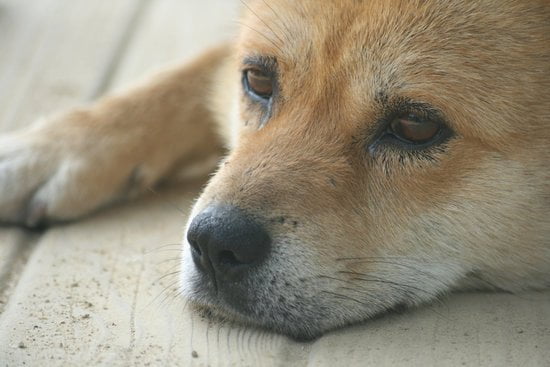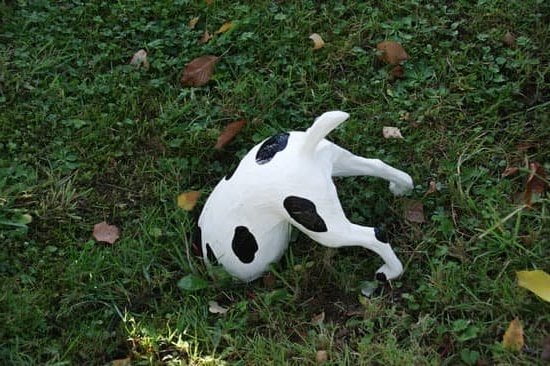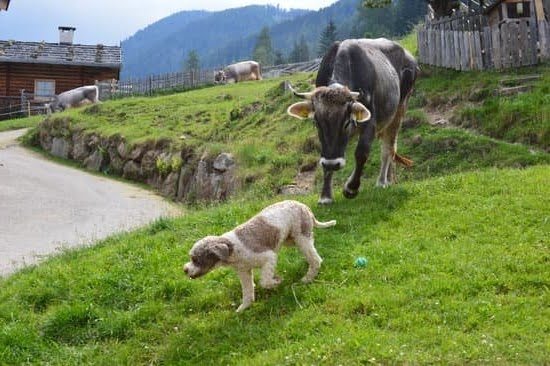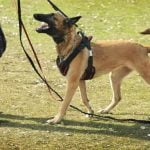Are you struggling with how to train your older dog to use puppy pads? Many pet owners find themselves in a similar situation as their beloved furry friends age and may have difficulty controlling their bladder. In this comprehensive guide, we will explore the reasons why older dogs may need puppy pads and provide a step-by-step approach to successfully training them.
As dogs age, they may experience a decline in their physical abilities, including bladder control. This can result in accidents inside the house, which can be frustrating for both the pet and the owner. Puppy pads offer a solution by providing a designated indoor bathroom area for older dogs who may struggle to hold it until they can go outside. Understanding the need for puppy pads is essential in addressing this common issue among aging pets.
In order to effectively train your older dog to use puppy pads, it’s important to first assess their current bathroom habits and needs. Every dog is different, and taking the time to understand your pet’s specific requirements will greatly contribute to the success of the training process. Additionally, choosing the right type and location of puppy pads for your older dog is crucial in ensuring that they feel comfortable using them.
These key aspects will be thoroughly discussed in the following sections of this article. By gaining insight into your dog’s behavior and providing them with an appropriate setup, you’ll be on your way to successfully training them to use puppy pads.
Assessing Your Older Dog’s Current Bathroom Habits and Needs
Evaluating Your Dog’s Health and Mobility
Before introducing puppy pads to your older dog, it’s important to assess their current health and mobility. Older dogs may have medical conditions that affect their bathroom habits, such as arthritis or incontinence.
Take note of any physical limitations that may make it difficult for your dog to hold their bladder or signal when they need to go outside. Consulting with a veterinarian can help you understand any underlying health issues that may be impacting your older dog’s bathroom needs.
Observing Your Dog’s Bathroom Routines
Take the time to observe your older dog’s current bathroom routines. Note the frequency and timing of their bathroom breaks, as well as any signals they give when they need to go. Understanding your dog’s natural rhythms will help you create a more effective training plan for using puppy pads. Additionally, paying attention to where your dog tends to eliminate indoors can help you determine the best location for placing the puppy pads.
Identifying Potential Behavioral Challenges
In some cases, older dogs may exhibit behavioral challenges when it comes to their bathroom habits. This could include anxiety-related accidents, territorial marking, or confusion about where it’s appropriate to eliminate. By identifying any specific behavioral challenges your older dog may have, you can tailor your training approach and address these issues with patience and positive reinforcement. Understanding these challenges will also help you set realistic expectations for the training process and anticipate any setbacks along the way.
Choosing the Right Type and Location of Puppy Pads for Your Older Dog
When it comes to choosing the right puppy pads for your older dog, there are a few important factors to consider. First, you’ll want to select a pad that is large enough to accommodate your dog’s size and bathroom habits. For larger breeds or dogs that produce more urine, a larger and more absorbent pad may be necessary.
The location of the puppy pads is also crucial to the training process. It’s best to place the pads in an easily accessible area for your older dog, preferably close to their usual bathroom spot. This will help them make the connection between using the pads and relieving themselves in a specific area of the house.
In addition, consider the material of the puppy pads. Some older dogs may have sensitive paws, so opting for softer and more comfortable pads can make the training process more pleasant for them. Also, if your older dog tends to chew on things, choosing a pad with a strong odor neutralizer can help deter them from destroying the pads.
| Factors to Consider | Consideration |
|---|---|
| Puppy Pad Size | Large enough for dog; absorbency |
| Location | Easily accessible; close to usual bathroom spot |
| Material | Soft and comfortable; odor neutralizer if needed |
Introducing Your Older Dog to the Concept of Puppy Pads and Positive Reinforcement
When it comes to training older dogs to use puppy pads, it’s important to understand that they may need a little more patience and understanding compared to younger dogs. The first step in this process is introducing your older dog to the concept of puppy pads and positive reinforcement. This will help them understand where they should go when they need to relieve themselves indoors.
To start, it’s essential to choose the right type of puppy pad for your older dog. Consider factors such as size, absorbency, and odor control. Additionally, think about the location of the puppy pads in your home. It’s best to place them in a quiet and easily accessible area for your older dog.
Once you have the puppy pads set up, it’s time to introduce your older dog to them. Use positive reinforcement techniques such as treats, praise, and affection when they use the pads correctly. This will help them associate using the pads with a positive experience, making them more likely to continue using them in the future.
- Choose the right type of puppy pad
- Consider the location of the puppy pads in your home
- Introduce positive reinforcement techniques such as treats and praise
Establishing a Consistent Bathroom Routine and Using Cues for Using Puppy Pads
When training your older dog to use puppy pads, consistency is key. You will need to establish a consistent bathroom routine to help your dog understand when and where they should be using the puppy pads. Here are some tips to help you with this process:
- Take your older dog to the puppy pad on a regular schedule, such as first thing in the morning, after meals, and before bedtime.
- Use verbal cues or commands such as “go potty” or “potty time” when bringing your dog to the puppy pad. This will help them understand what is expected of them.
- Be patient and give your older dog plenty of time to use the puppy pad. It may take some time for them to get used to this new routine, especially if they are used to going outside.
In addition to establishing a consistent bathroom routine, using positive reinforcement can also be helpful in training your older dog to use puppy pads. When your dog successfully uses the pad, be sure to praise and reward them with treats or verbal praise. This will help reinforce the behavior and encourage them to continue using the pads.
Lastly, it’s important not to punish your older dog for accidents during the training process. Accidents will happen, and scolding or punishing your dog can cause stress and confusion. Instead, focus on consistency, positive reinforcement, and patience as you work with your older dog to establish a consistent bathroom routine using puppy pads.
Dealing With Accidents and Setbacks During the Training Process
Accidents are bound to happen when training an older dog to use puppy pads. It is important to remember that accidents are a natural part of the learning process and should not be cause for frustration or punishment. Instead, accidents should be used as opportunities for further reinforcement and learning. When dealing with accidents, it is crucial to remain patient and consistent in your training approach.
One way to handle accidents during the training process is to clean up the mess properly and without drawing attention to it. Use an enzymatic cleaner to thoroughly remove any traces of urine or feces, as dogs are naturally drawn to eliminate in areas where they have previously soiled. Avoid using ammonia-based cleaners as they can actually attract a dog back to the same spot.
It’s also important to reassess the training routine if accidents become frequent. Take note of any patterns or triggers that may be causing your older dog to have accidents and adjust your training plan accordingly. Additionally, consider consulting with a professional dog trainer or behaviorist for guidance if you feel that you are not making progress with your older dog’s potty training.
| Dealing With Accidents | Setbacks During Training Process |
|---|---|
| Remain patient and consistent | Clean up the mess properly without drawing attention |
| Reassess the training routine if accidents become frequent | Consider consulting a professional dog trainer |
Gradually Transitioning From Puppy Pads to Outdoor Bathroom Habits for Your Older Dog
As your older dog becomes more accustomed to using puppy pads, you may want to eventually transition them to outdoor bathroom habits. This process can take time and patience, but with the right approach, it is definitely achievable.
Start by Increasing Outdoor Time
To begin the transition, start by gradually increasing the amount of time you spend outside with your older dog. Take them for more frequent walks or trips to the yard, especially after meals and naps. This will help them associate outdoor time with going to the bathroom.
Use Positive Reinforcement
When your older dog does use the bathroom outside, be sure to offer plenty of praise and rewards. Positive reinforcement will help reinforce the behavior and encourage them to continue using the outdoor space for their bathroom needs.
Monitor Their Progress
Pay close attention to your older dog’s behavior and bathroom habits during this transition period. If they show signs of needing to go while indoors, gently redirect them towards the outdoor space. Consistency is key during this phase of training.
Remember that each dog is different, so be patient and understanding as you work through this process with your older dog. With time and consistent effort, you can successfully transition them from using puppy pads indoors to establishing regular outdoor bathroom habits.
Tips for Success and Troubleshooting Common Issues With Training Older Dogs to Use Puppy Pads
In conclusion, training an older dog to use puppy pads can be a challenging but ultimately rewarding process. Understanding the need for puppy pads and assessing your older dog’s bathroom habits are crucial first steps in this training journey. Choosing the right type and location of puppy pads is also important to set your dog up for success.
Introducing your older dog to the concept of puppy pads with positive reinforcement and establishing a consistent bathroom routine are key aspects of the training process. It’s important to be patient and understanding, as setbacks and accidents may occur along the way. Dealing with these issues calmly and consistently will help reinforce the training and eventually lead to success.
As you continue with the training process, gradually transitioning from puppy pads to outdoor bathroom habits for your older dog will be necessary. With consistency, positive reinforcement, and patience, most older dogs can successfully make this transition. Finally, being aware of common issues and troubleshooting methods will help you navigate any challenges that arise during the training process. Overall, with dedication and a positive attitude, it is possible to successfully train your older dog to use puppy pads.
Frequently Asked Questions
How Long Does It Take to Puppy Pad Train a Dog?
The time it takes to puppy pad train a dog can vary depending on the individual dog and their ability to learn. Some dogs may pick up on it quickly within a few weeks, while others may take longer. Consistency, positive reinforcement, and patience are key factors in successfully puppy pad training a dog.
Why Won’t My Dog Use the Puppy Pad?
There could be several reasons why your dog is not using the puppy pad. It’s possible that they haven’t fully grasped the concept of potty training yet or that there are underlying health issues causing them to have accidents.
It’s important to rule out any medical concerns and then focus on retraining and reinforcing the use of the puppy pads through consistent training.
How Do You Potty Train a Puppy When You Have an Older Dog?
Potty training a new puppy when you have an older dog in the home requires careful management and supervision. It’s important to establish separate potty areas for each dog and supervise them closely during potty breaks until the new puppy understands where they should go.
Older dogs can actually help with potty training by serving as role models for the younger puppy, so their behavior can also influence the new pup’s learning process. With consistent training and patience, both dogs can successfully learn to coexist during potty training.

Welcome to the blog! I am a professional dog trainer and have been working with dogs for many years. In this blog, I will be discussing various topics related to dog training, including tips, tricks, and advice. I hope you find this information helpful and informative. Thanks for reading!





